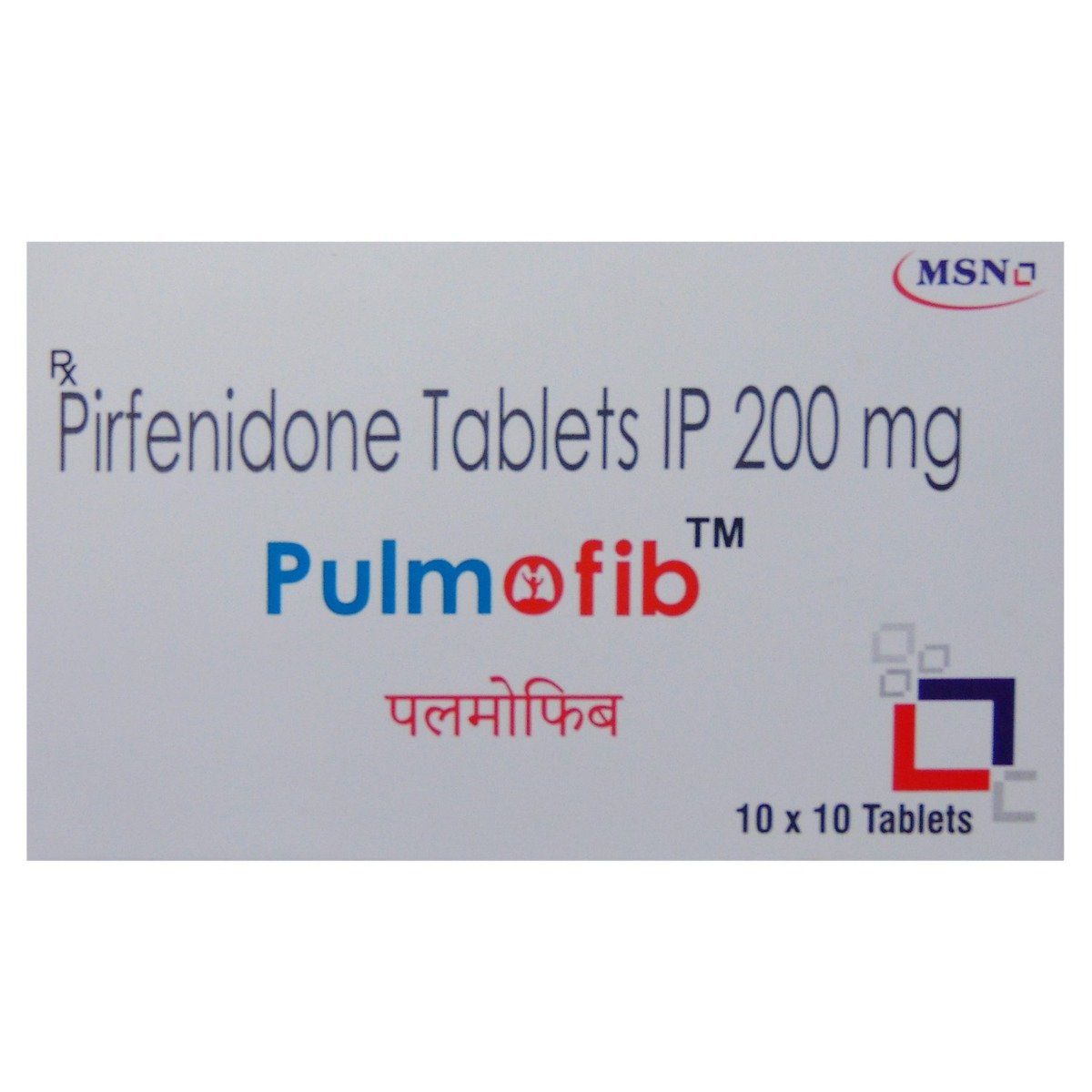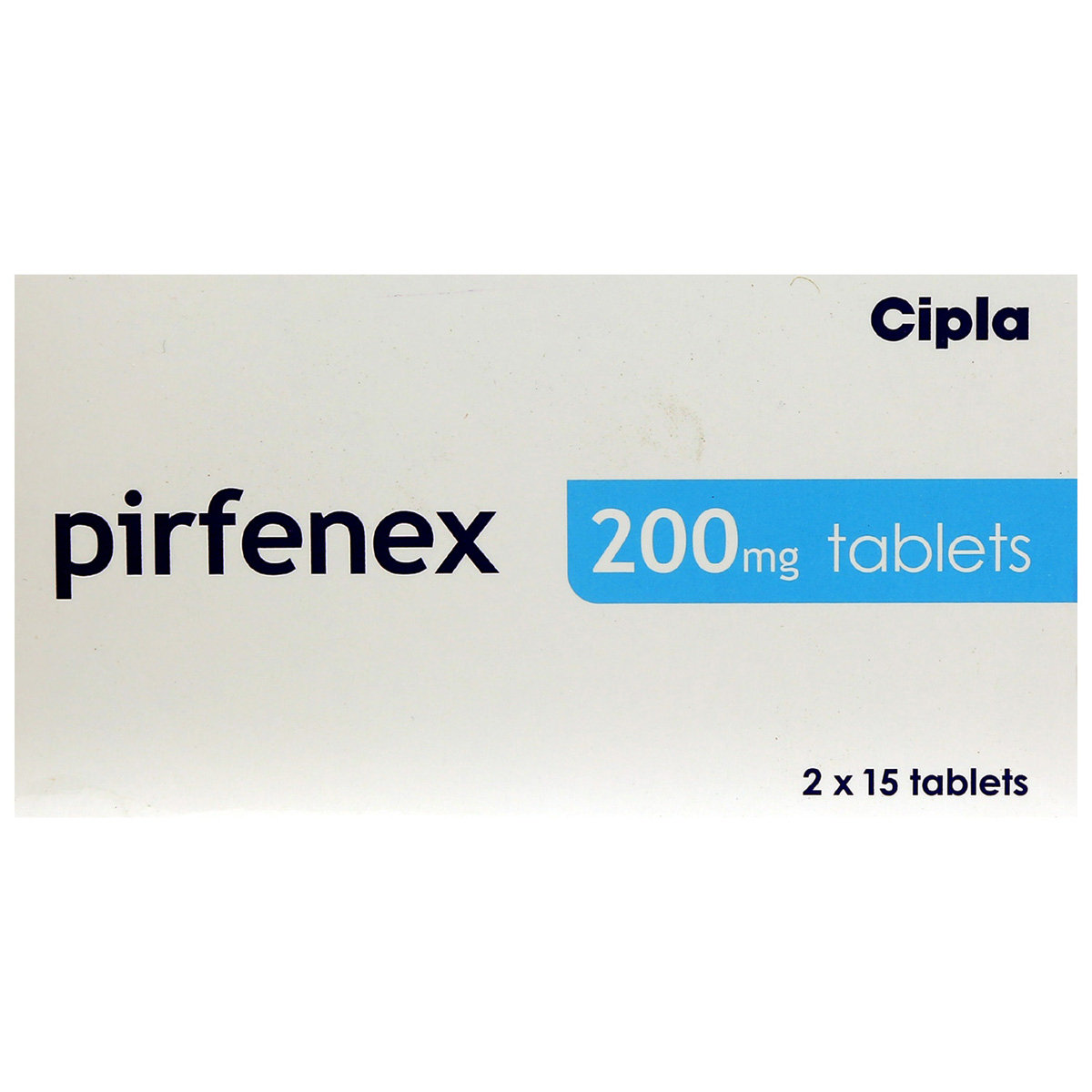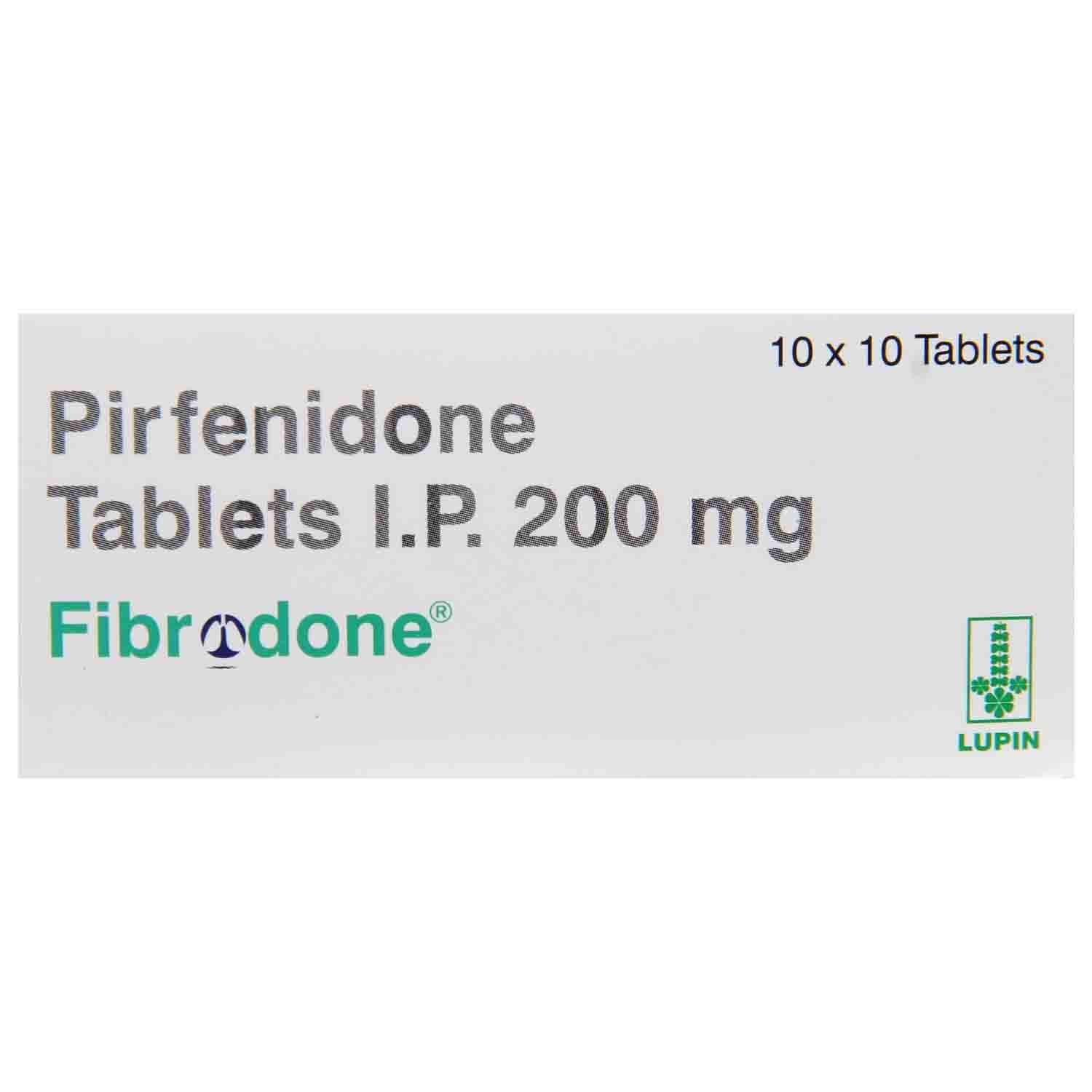Palsa 200 Tablet 10's
MRP ₹219
(Inclusive of all Taxes)
₹32.9 Cashback (15%)
Provide Delivery Location
Online payment accepted
 Prescription drug
Prescription drugWhats That
Composition :
Manufacturer/Marketer :
Consume Type :
Return Policy :
Expires on or after :
About Palsa 200 Tablet
Palsa 200 Tablet is an anti-fibrotic medicine used to treat idiopathic pulmonary fibrosis (IPF) in adults. IPF is an irreversible disease that is marked by a progressive decline in lung function. The tissues in the lungs become swollen and scarred over time, due to which it gets difficult to breathe deeply. The scarring makes it hard for the lungs to work properly.
Palsa 200 Tablet contains ‘Pirfenidone’, which helps in reducing the scarring and swelling in the lungs by decreasing the release/activity of naturally occurring growth factors in the body, thereby helps you breathe better. Palsa 200 Tablet helps in slowing down the progress of idiopathic pulmonary fibrosis.
In some cases, you may experience certain common side effects such as nausea, tiredness, diarrhoea, indigestion, loss of appetite, headache, and photosensitivity. Most of these side effects do not require medical attention and will resolve gradually over time. However, you are advised to talk to your doctor if you experience these side effects persistently.
Consult your doctor before taking Palsa 200 Tablet if you are pregnant or breastfeeding. Palsa 200 Tablet may cause tiredness and dizziness, so drive with caution. Avoid consuming alcohol with Palsa 200 Tablet as it could lead to increased dizziness. Palsa 200 Tablet is not recommended for children below 18 years as safety and effectiveness have not been established. Keep your doctor informed about your health condition and medicines to rule out any side effects.
Uses of Palsa 200 Tablet
Directions for Use
Medicinal Benefits
Palsa 200 Tablet is an anti-fibrotic medicine used to treat idiopathic pulmonary fibrosis (IPF) in adults. Palsa 200 Tablet can help effectively slow the rate of lung function decline by 50%. Palsa 200 Tablet helps reduce the scarring and swelling in the lungs by decreasing the release/activity of naturally occurring growth factors in the body, thereby helps you breathe better. Palsa 200 Tablet helps in slowing down the progress of idiopathic pulmonary fibrosis.
Storage
- Inform your doctor about the nausea and discuss possible alternatives to the medication or adjustments to the dosage.
- Divide your daily food intake into smaller, more frequent meals to reduce nausea.
- Opt for bland, easily digestible foods like crackers, toast, plain rice, bananas, and applesauce.
- Avoid certain foods that can trigger nausea, such as fatty, greasy, spicy, and smelly foods.
- Drink plenty of fluids, such as water, clear broth, or electrolyte-rich beverages like coconut water or sports drinks.
- Use ginger (tea, ale, or candies) to help relieve nausea.
- Get adequate rest and also avoid strenuous activities that can worsen nausea.
- Talk to your doctor about taking anti-nausea medication if your nausea is severe.
- Record when your nausea occurs, what triggers it, and what provides relief to help you identify patterns and manage your symptoms more effectively.
- Skin rash caused by allergies is due to irritants or allergens. Therefore, avoid contact with such irritants.
- Consult your doctor for proper medication and apply an anti-itch medication. Follow the schedule and use the medication whenever needed.
- Protect your skin from extreme heat and try to apply wet compresses.
- Soak in the cool bath, which gives a soothing impact to the affected area.
- Inform your doctor about the symptoms you're experiencing due to medication.
- Your doctor may adjust your treatment plan, which could include changing your medication, adding new medications, or offering advice on managing your symptoms.
- Practice good hygiene, including frequent handwashing, avoiding close contact with others, and avoiding sharing utensils or personal items.
- Stay hydrated by drinking plenty of fluids to help loosen and clear mucus from your nose, throat, and airways.
- Get plenty of rest and engage in stress-reducing activities to help your body recover. If your symptoms don't subside or worsen, consult your doctor for further guidance.
- Inform Your Doctor: Notify your doctor immediately about your diarrhoea symptoms. This allows them to adjust your medication or provide guidance on managing side effects.
- Stay Hydrated: Drink plenty of fluids to replace lost water and electrolytes. Choose water, clear broth, and electrolyte-rich drinks. Avoid carbonated or caffeinated beverages to effectively rehydrate your body.
- Follow a Bland Diet: Eat easy-to-digest foods to help firm up your stool and settle your stomach. Try incorporating bananas, rice, applesauce, toast, plain crackers, and boiled vegetables into your diet.
- Avoid Trigger Foods: Steer clear of foods that can worsen diarrhoea, such as spicy, fatty, or greasy foods, high-fibre foods, and dairy products (especially if you're lactose intolerant).
- Practice Good Hygiene: Maintain good hygiene to prevent the spread of infection. To stay healthy, wash your hands frequently, clean and disinfect surfaces regularly, and avoid exchanging personal belongings with others.
- Take Anti-Diarrheal Medications: If your doctor advises, anti-diarrheal medications such as loperamide might help manage diarrhoea symptoms. Always follow your doctor's directions.
- Keep track of your diarrhoea symptoms. If they don't get better or worse or are accompanied by severe stomach pain, blood, or dehydration signs (like extreme thirst or dark urine), seek medical help.
- Rest well; get enough sleep.
- Eat a balanced diet and drink enough water.
- Manage stress with yoga and meditation.
- Limit alcohol and caffeine.
- Physical activities like walking or jogging might help boost energy and make you feel less tired.
- Drink water or other clear fluids.
- To prevent worsening of pain, limit intake of tea, coffee, or alcohol.
- Include bland foods like rice, toast, crackers, and rice in your diet.
- Avoid lying down immediately after eating as it may cause indigestion or heartburn.
- Avoid acidic and spicy food as it may cause indigestion.
- Hydrate your body: Drink enough water to prevent dehydration and headaches.
- Calm Your Mind: Deep breathing and meditation can help you relax and relieve stress.
- Rest and Recharge: Sleep for 7-8 hours to reduce headache triggers.
- Take rest: lie down in a quiet, dark environment.
- Cold or warm compresses can help reduce tension.
- Stay Upright: Maintain good posture to keep symptoms from getting worse.
- To treat headaches naturally, try acupuncture or massage therapy.
- Over-the-counter pain relievers include acetaminophen and ibuprofen.
- Prescription Assistance: Speak with your doctor about more substantial drug alternatives.
- Severe Headaches: Seek emergency medical assistance for sudden, severe headaches.
- Frequent Headaches: If you get reoccurring headaches, consult your doctor.
- Headaches with Symptoms: Seek medical attention if your headaches include fever, disorientation, or weakness.
Drug Warnings
Do not take Palsa 200 Tablet if you are allergic to any of its components; if you have a severe or end-stage liver impairment or kidney disease requiring dialysis; if you are taking fluvoxamine (anti-depressant). Inform your doctor if you are taking any medicines that might make you photosensitive, if you smoke or have kidney or liver problems. Consult your doctor before taking Palsa 200 Tablet if you are pregnant or breastfeeding. Palsa 200 Tablet may cause tiredness and dizziness, so drive with caution. Avoid consuming alcohol with Palsa 200 Tablet as it could lead to increased dizziness. Palsa 200 Tablet is not recommended for children below 18 years as safety and effectiveness have not been established.
Drug-Drug Interactions
Drug-Drug Interactions
Login/Sign Up
Taking Palsa 200 Tablet with rifampicin can reduce the levels and effects of Palsa 200 Tablet
How to manage the interaction:
Although there is an interaction between Palsa 200 Tablet and rifampicin, they can be taken together if prescribed by a doctor. However, if you experience any unusual symptoms, contact a doctor immediately. Do not discontinue any medications without consulting a doctor.
Taking Palsa 200 Tablet with Carbamazepine it reduces the levels and effects of Palsa 200 Tablet.
How to manage the interaction:
Taking Palsa 200 Tablet with Carbamazepine is not recommended but can be taken if prescribed by the doctor. However, if you experience any unusual symptoms contact a doctor immediately. Do not stop using any medications without talking to a doctor.
Coadministration of Palsa 200 Tablet with primidone can reduce levels and the effects of Palsa 200 Tablet.
How to manage the interaction:
Although there is an interaction between Palsa 200 Tablet and primidone, they can be taken together if advised by your doctor. However, if you experience any unusual symptoms, contact a doctor immediately. Do not discontinue any medications without consulting a doctor.
When Palsa 200 Tablet is taken with Phenobarbital, it can decrease the effects of Palsa 200 Tablet.
How to manage the interaction:
Taking Palsa 200 Tablet with Phenobarbital is not recommended but can be taken if prescribed by the doctor. Do not discontinue any medication without consulting a doctor.
Taking Lomitapide with Palsa 200 Tablet may increase the risk of liver damage
How to manage the interaction:
There may be a possibility of interaction between Palsa 200 Tablet and Lomitapide, but it can be taken if prescribed by a doctor. However, if you have any of the following symptoms: fever, chills, joint pain or swelling, unusual bleeding or bruising, skin rash, itching, fatigue, lack of appetite, nausea, vomiting, abdominal pain, dark urine, light stools, and/or yellowing of the skin or eyes, consult a doctor immediately. Do not discontinue any medications without a doctor's advice.
When ciprofloxacin is taken Palsa 200 Tablet, the blood levels of Palsa 200 Tablet may increase, which may lead to side effects.
How to manage the interaction:
Although taking ciprofloxacin and Palsa 200 Tablet together can possibly result in an interaction, it can be taken if your doctor has prescribed it. However, if you have any of the following symptoms, fever, chills, joint pain or swelling, unusual bleeding or wounds, skin rash, itching, tiredness, nausea, vomiting, dark urine, light stools, and/or yellowing of the skin or eyes, consult a doctor. Do not discontinue any medications without a doctor's advice.
When Palsa 200 Tablet is taken with Fluvoxamine, it can increase the risk of side effects.
How to manage the interaction:
Taking Palsa 200 Tablet with Fluvoxamine can possibly result in an interaction, but it can be taken if your doctor has advised it. However, if you have any of the following symptoms: fever, chills, joint pain or swelling, unusual bleeding or bruising, skin rash, itching, fatigue, lack of appetite, nausea, vomiting, abdominal pain, dark urine, light stools, and/or yellowing of the skin or eyes, consult a doctor immediately. Do not discontinue any medications without consulting a doctor.
Co-administration of Aminolevulinic acid and Palsa 200 Tablet may increase the risk of skin burn.
How to manage the interaction:
There may be a possibility of interaction between Palsa 200 Tablet and Aminolevulinic acid, but it can be taken if prescribed by a doctor. Avoid exposure of the eyes and skin to sunlight or bright indoor lights for 48 hours after treatment. Do not discontinue any medications without consulting a doctor.
Co-administration of Amiodarone and Palsa 200 Tablet may raise the risk of liver issues.
How to manage the interaction:
Even though Amiodarone and Palsa 200 Tablet interact, they can be used if a doctor prescribes them. Seek medical attention if you have a fever, chills, joint pain or swelling, unusual bleeding or bruises, skin rash, itching, lack of hunger, tiredness, nausea, vomiting, abdominal pain, dark colored urine, light colored stools, or yellowing of the skin or eyes. Do not stop taking any medications without visiting a doctor.
Taking Palsa 200 Tablet with Rucaparib can increase the risk or severity of its side effects such as liver disease or gastric problems.
How to manage the interaction:
Co-administration of Palsa 200 Tablet with Rucaparib can possibly result in an interaction, but it can be taken if your doctor has advised it. However, if you have any of the following symptoms: fever, chills, joint pain or swelling, unusual bleeding or bruising, skin rash, itching, fatigue, lack of appetite, nausea, vomiting, abdominal pain, dark urine, light stools, and/or yellowing of the skin or eyes, consult a doctor immediately.
Drug-Food Interactions
Drug-Food Interactions
Login/Sign Up
Grapefruit Juice, Grapefruit
How to manage the interaction:
Taking grape fruit and its products while using Palsa 200 Tablet can increase the risk of side effects. Avoid grape fruit and its products during treatment with Palsa 200 Tablet.
Diet & Lifestyle Advise
- Watch out for triggers that make the cough worse, such as smoke, foods, air-conditioning, high altitude, etc.
- Exercise moderately. Eat healthily.
- Follow the pulmonary rehabilitation program. It includes exercise, disease education, and group therapy.
- Quit smoking.
- Get ample rest.
- Include green leafy vegetables, sweet potatoes, broccoli, tomatoes, carrots, mangoes, citrus fruits, berries, and cocoa.
- Lean proteins such as fish, meat, and poultry are the best.
- Hydration is important. Drink plenty of water, herbal tea, and fruit juices.
- Avoid processed and refined foods.
Side Effects of Palsa 200 Tablet
- Nausea
- Tiredness
- Diarrhoea
- Indigestion/Stomach upset
- Loss of appetite
- Headache
- Photosensitivity
Habit Forming
Therapeutic Class
All Substitutes & Brand Comparisons
RX
Out of StockPirfemac 200mg Tablet 10's
Macleods Pharmaceuticals Ltd
₹151
(₹13.59 per unit)
31% CHEAPERRX
Out of StockPirfenair 200mg Tablet 10's
Wockhardt Ltd
₹175
(₹15.75 per unit)
20% CHEAPERRX
Out of StockPirfib 200Mg Tablet 10'S
Chemo Healthcare Pvt Ltd
₹210
(₹18.9 per unit)
4% CHEAPER
Product Substitutes
Author Details
We provide you with authentic, trustworthy and relevant information
Drug-Diseases Interactions
Drug-Diseases Interactions
Login/Sign Up
FAQs
Palsa 200 Tablet helps in reducing the scarring and swelling in the lungs by decreasing the release/activity of naturally occurring growth factors in the body, thereby helps you breathe better.
Palsa 200 Tablet might make you photosensitive (sensitivity to sunlight). Avoid exposure to sunlight and sunlamps. Wear SPF 50+ sunscreen and protective clothing to reduce exposure to sunlight. Talk to your doctor if you are taking any medicines known to cause photosensitivity. If you notice any symptoms of photosensitivity, consult a doctor.
Do not discontinue Palsa 200 Tablet without consulting your doctor. To treat your condition effectually, continue taking Palsa 200 Tablet for as long as prescribed. Do not be reluctant to speak with your doctor if you experience any difficulty while taking Palsa 200 Tablet .
Diarrhoea might be a side-effect of Palsa 200 Tablet . Drink lots of fluids and eat non-spicy food if you experience diarrhoea. If you find blood in stools (tarry stools) or if you have severe diarrhoea, consult your doctor. Do not take anti-diarrheal medicine on your own.
No, avoid smoking prior to the start of the treatment and while taking Palsa 200 Tablet as smoking might alter the effectiveness of Palsa 200 Tablet .
Weight loss could occur due to loss of appetite. Maintain proper weight by eating healthy food. Your doctor might monitor your weight whilst taking Palsa 200 Tablet . Consult your doctor if you notice severe weight loss.
Drug-Drug Interactions Checker List
- FLUVOXAMINE
- CIPROFLOXACIN
- ENOXACIN
- RIFAMPICIN
- AMIODARONE
- PROPAFENONE
- OMEPRAZOLE
Special Advise
- Your doctor may advise liver function tests prior to the start of the treatment.
- Regular blood tests are advised at the start of treatment with Palsa 200 Tablet and monthly for every 6 months, and then for every 3 months thereafter to check the liver functioning.
Disease/Condition Glossary
Idiopathic pulmonary fibrosis (IPF): Idiopathic pulmonary fibrosis belongs to a group of interstitial lung diseases. It is an irreversible chronic disease marked by a progressive decline in lung function. The tissues in the lungs become inflamed and scarred over time, due to which it gets difficult to breathe properly. The scar tissue, known as fibrosis, becomes thick /stiff over time, making it hard for the lungs to work efficiently. This causes decreased lung function, which leads to increased breathlessness and coughing. Breathing difficulties can lead to other medical problems. Symptoms of IPF are shortness of breath, persistent dry cough, loss of appetite, weight loss, rounded and widened tips of the fingers and toes.
Health Queries

Have a query?
Alcohol
Caution
It is not known if alcohol interacts with Palsa 200 Tablet . However, avoid consumption of alcohol while taking Palsa 200 Tablet as it may cause increased dizziness.
Pregnancy
Caution
Please consult your doctor if you have any concerns regarding this; your doctor will prescribe only if the benefits outweigh the risks.
Breast Feeding
Caution
Consult your doctor if you are breastfeeding; your doctor will decide whether Palsa 200 Tablet can be taken by breastfeeding mothers or not.
Driving
Caution
Palsa 200 Tablet might cause dizziness and tiredness. Drive or operate machinery only if you are alert.
Liver
Caution
Dose adjustment may be needed. Please consult your doctor if you have a liver impairment or any concerns regarding this. Palsa 200 Tablet is not recommended for patients with severe hepatic impairment.
Kidney
Caution
Dose adjustment may be needed. Please consult your doctor if you have kidney impairment or any concerns. Palsa 200 Tablet is not recommended for patients with an end-stage renal disease requiring dialysis.
Children
Unsafe
Palsa 200 Tablet is not recommended for children below 18years as the safety and effectiveness has not been established.










_0.jpg?tr=q-85)

